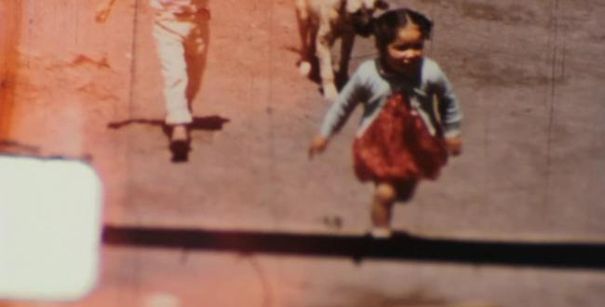The mapping of memories
Amado Cabrales of the Guadalajara Talent Press 2014 reviews Gabriela Rubalcava's LA DANZA DEL HIPOCAMPO.

Gabriela Rubalcava's LA DANZA DEL HIPOCAMPO.
Third scene, the sea. We see a sunset; the clouds are tinged with orange and pink colors as the sun sets in a mountainous horizon, we can see the ripples of the tide in the bottom of the screen, a female voice talks about an obsession, a search that associates the sea, the sea as a memory. From this scene on, the film progressively will be entering in the deep sea. That sea that we have only seen in surface, it will be unraveling, it will be displaying itself in space and present time.
To build identity parting from the memory, from moments throughout life is a kind of reorganization of our past in the present. The search imposed by Gabriela Ruvalcaba´s memory, to herself as a director is an effort to rescue the family´s archive in Super 8, betamax, photographs and slides, images that compares with new full HD footage of places, of her family in the act of remembering and figure out visual metaphors that the mind unravels. It’s just this game of opposition and complementarily of the being and had been, from looking back at itself and its family what defines today. This creates a visual identity of the director and her work parting from the search of the family´s obsession to preserve an image.
The multiple contacts are linked by an off camera voice which narrates the search, the birth of an obsession, which is discover as inheritance. This inheritance of questions are weaving the different textures of the film formats, we go around the parties and gatherings, the games of editing from "Uncle Beto". The metaphor of the sea such as memory, with its waves and movement, with its deep space, opens up a whole range of shots where we get to comprehend how the dance works. With a precise cut and scientific data the voice carry us to poetic reflections trying to unravel the game we make between the hippocampus and our lives. The memory does not reside in the mind, as Rubalcaba affirms, memory is action and it is perhaps in the empty space, in that little space between dendrites and axons, the deep sea of synaptic connections which is stirred with images sounds and words that the memory exists and there is unfolding here on the outside, in the aromas, the senses. The expanded space in memory images sometimes follows the outline map. Ruvalcaba filmes, compares the images by the files of the places of her childhood, even recording spaces that she has not been at, but from someone else´s memory.
The structure of the film is divided into the search of 7 different moments, according to what the film presents us with, is the number of elements that the short-term memory uses to carry the hippocampus, the files of the being. It is difficult to say how it has been classified as a documentary, the lines between fiction film and forms of construction of documentary film are blurred. What we see is pure subjectivity, which draws from the real to its elucidation.
It is clear that the image taken is not the memory, is a trigger, a visual prosthesis that leads the recesses of the mind, to the hippocampus. The danger resides only by remembering the image unable to access the memory before it. If it is true that the soul, as the tzotziles tribes believe; its trapped in the captured image, this action voids then the return to the moment previous to the action, to a moment´s essence. Remembering through the prosthesis, it develops the raw memory it is then that the construction of the film does not aspire to fidelity of memories, but to its contemplation of the appreciation of what is preserved and what is lost building new ways to remember facts, images, parallel processes that we also undertake as public.
A reel of film falls into the sea, we see it fall slowly, we follow its winding path, has become a vehicle, a celluloid anemone at the hippocampus landscape. We sailed the Lethe River, the ocean of forgiveness by the hand of the narrative of the search Our boat is cinema, the structure of cinematography´s language, the transitions, the fade outs and the symbolic relationship among the shots. Reflect about cinema, about its capacity to capture the very instant of the soul. The technicolor, the cracks on the photography, the traces, as is the gesture of an extended time in space as it is the wearing out of things over time as is the gesture of an extended time in space. Self decomposition as evidence of its temporality.
Constantly the voiceover, questions, challenges us, and among the questions resonates: Does a memory itself become a memory of our own?
She gives us her memory and this one turns into us, in a memory of our own, in an image inside our imagination. The cinema as a vehicle leads does not take us to the memory, takes us to the present, provides a dialectical of the image, allows us to question ourselves, to develop new ways of remembering, the kinetics of their expression allows us to look at different times, gives us the necessary reflection, the film feeds the memory, perhaps the memory may just build the cinema.
By Amado Cabrales.

